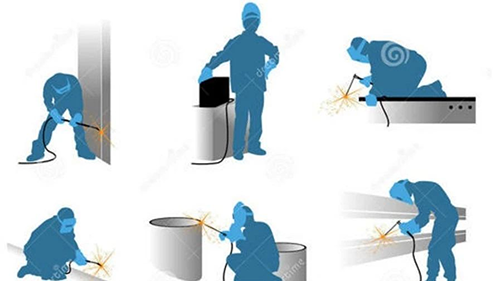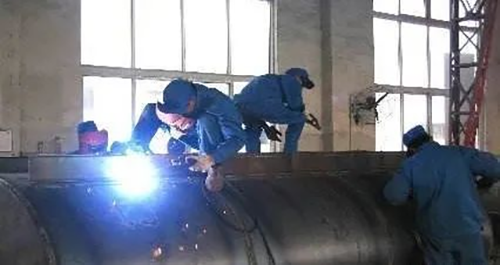Dear welder friends, the electrical welding operations you are engaged in may involve metal smoke hazards, harmful gas hazards, and arc light radiation hazards during your work. I must inform you of the hazard factors and preventive measures!
Xinfa welding equipment has the characteristics of high quality and low price. For details, please visit: Welding & Cutting Manufacturers – China Welding & Cutting Factory & Suppliers (xinfatools.com)
1. Occupational hazards of electrical welding
(1) Hazards of metal smoke:
The composition of welding fume varies depending on the type of welding rod used. During welding, the arc discharge generates a high temperature of 4000 to 6000°C. While melting the welding rod and the weldment, a large amount of smoke is produced, which is mainly composed of iron oxide, manganese oxide, silica, silicate, etc. The smoke particles permeate the In the working environment, it is easy to be inhaled into the lungs.
Long-term inhalation can cause fibrous lesions in the lung tissue, which is called welder’s pneumoconiosis, and is often accompanied by complications such as manganese poisoning, fluorosis and metal fume fever.
Patients mainly present with respiratory symptoms such as chest tightness, chest pain, shortness of breath, and cough, accompanied by headaches, general weakness and other symptoms. The lung qi function is also damaged to a certain extent.
(2) Hazards of harmful gases:
Under the action of high temperature and strong ultraviolet rays generated by the welding arc, a large amount of harmful gases, such as nitrogen oxides, carbon monoxide, ozone, etc., will be produced around the arc area.
When a large amount of hemoglobin combines with carbon monoxide, oxygen loses the opportunity to combine with hemoglobin, causing obstacles to the body’s ability to transport and utilize oxygen, causing human tissue to die due to lack of oxygen.
(3) Hazards of arc radiation:
The arc light generated by welding mainly includes infrared rays, visible light and ultraviolet rays. Among them, ultraviolet rays harm the human body mainly through photochemical effects. It damages the eyes and exposed skin, causing keratoconjunctivitis (photoophthalmia) and skin biliary erythema.
The main symptoms include eye pain, tearing, eyelid redness and spasm. After being exposed to ultraviolet rays, the skin may appear edematous erythema with clear boundaries. In severe cases, blisters, exudate and edema may appear, as well as an obvious burning sensation.
2. Hazardous consequences of electric welding
1. People who have been engaged in electrical welding for a long time have a higher risk of contracting pneumoconiosis.
2. Harmful gases may be inhaled during the operation, threatening human health and even life.
3. Electric welding operations can easily cause keratoconjunctivitis (electrophotophthalmia) and skin biliary erythema.
3. Precautions
(1) Improve welding technology and improve welding processes and materials
By improving welding technology, we can reduce the harm to the human body caused by welding operations. Since most of the hazards caused by welding are related to the composition of the electrode coating, choosing non-toxic or low-toxic welding electrodes is also one of the effective measures to reduce welding hazards.
(2) Improve ventilation conditions in the workplace
Ventilation methods can be divided into natural ventilation and mechanical ventilation. Mechanical ventilation relies on the pressure generated by fans to exchange air. It has better dust removal and detoxification effects. Therefore, it must be used when welding in indoor or closed spaces with poor natural ventilation. Mechanical ventilation measures.
(3) Strengthen personal protective measures
Strengthening personal protection can prevent the harm of toxic gases and dust generated during welding. Operators must use appropriate protective glasses, face shields, masks, gloves, white protective clothing, and insulated shoes. They must not wear short-sleeved clothes or rolled-up sleeves. If working in a closed container with poor ventilation conditions, they must also wear protective clothing. Protective helmet with air supply performance.
(4) Strengthen labor protection publicity and education work
Welding workers should be educated on necessary occupational safety and health knowledge to improve their awareness of self-prevention and reduce occupational hazards. At the same time, we should also strengthen the monitoring of dust hazards in welding workplaces and the physical examination of welders to discover and solve problems in a timely manner.
Post time: Dec-19-2023





